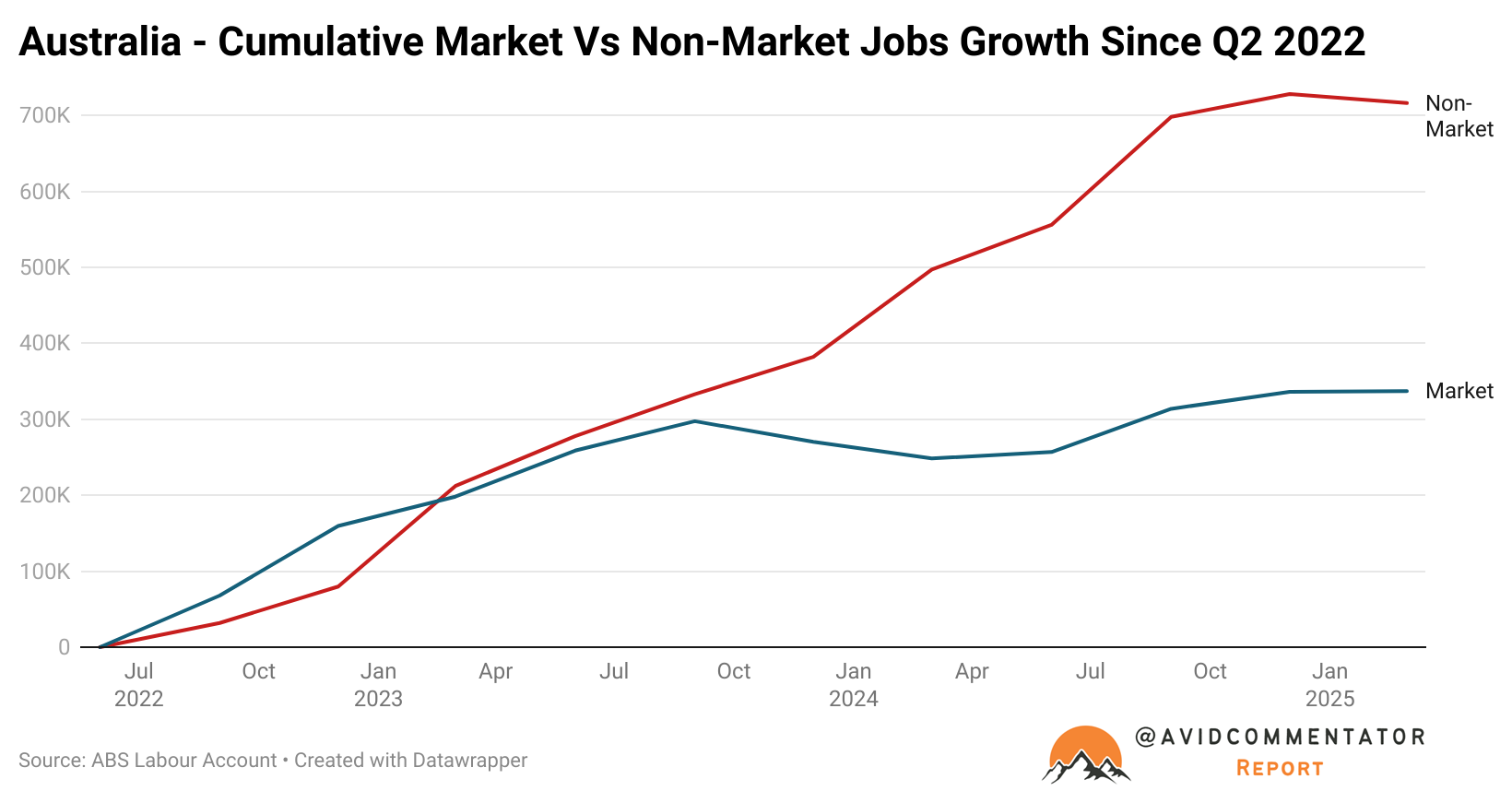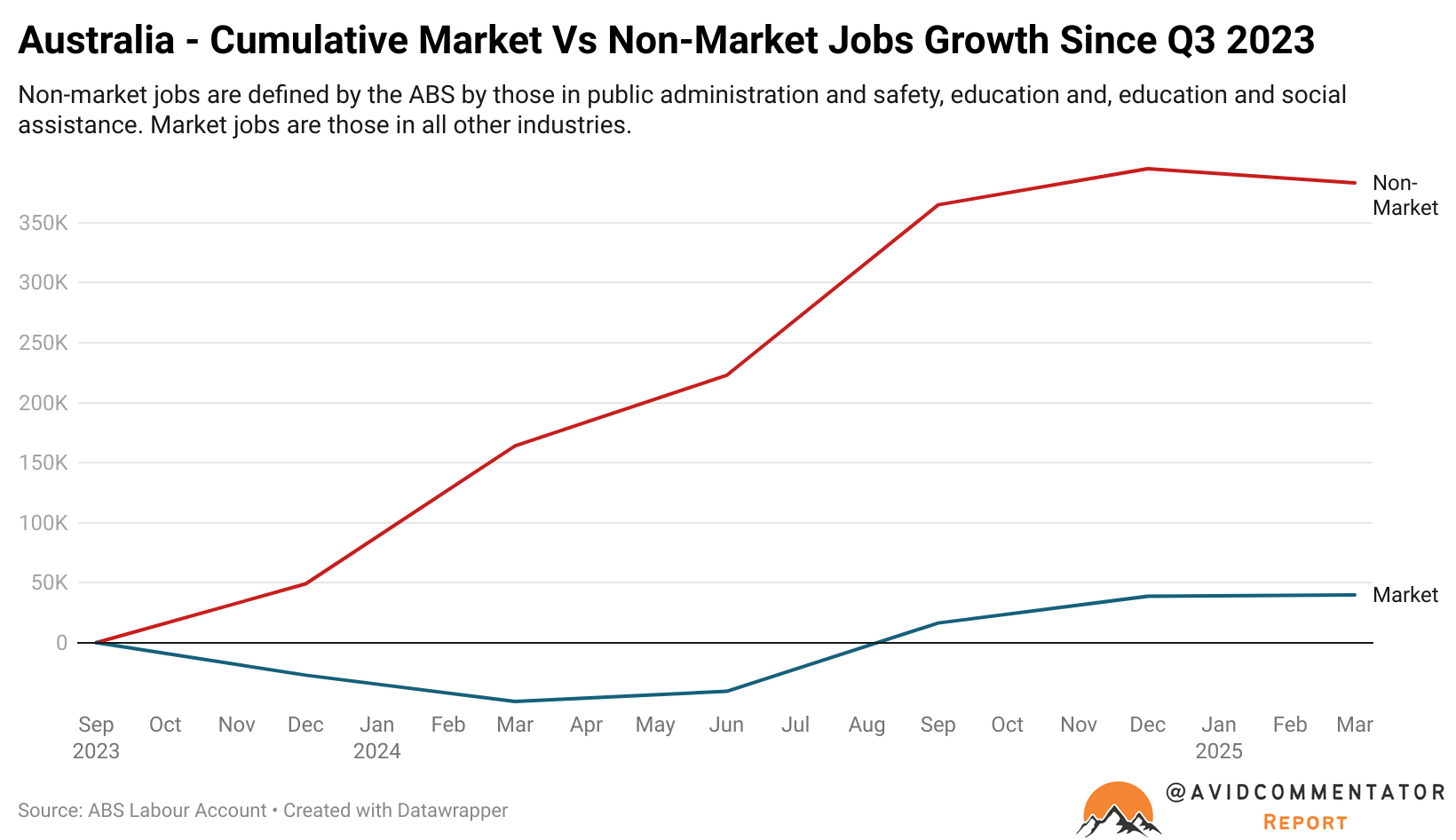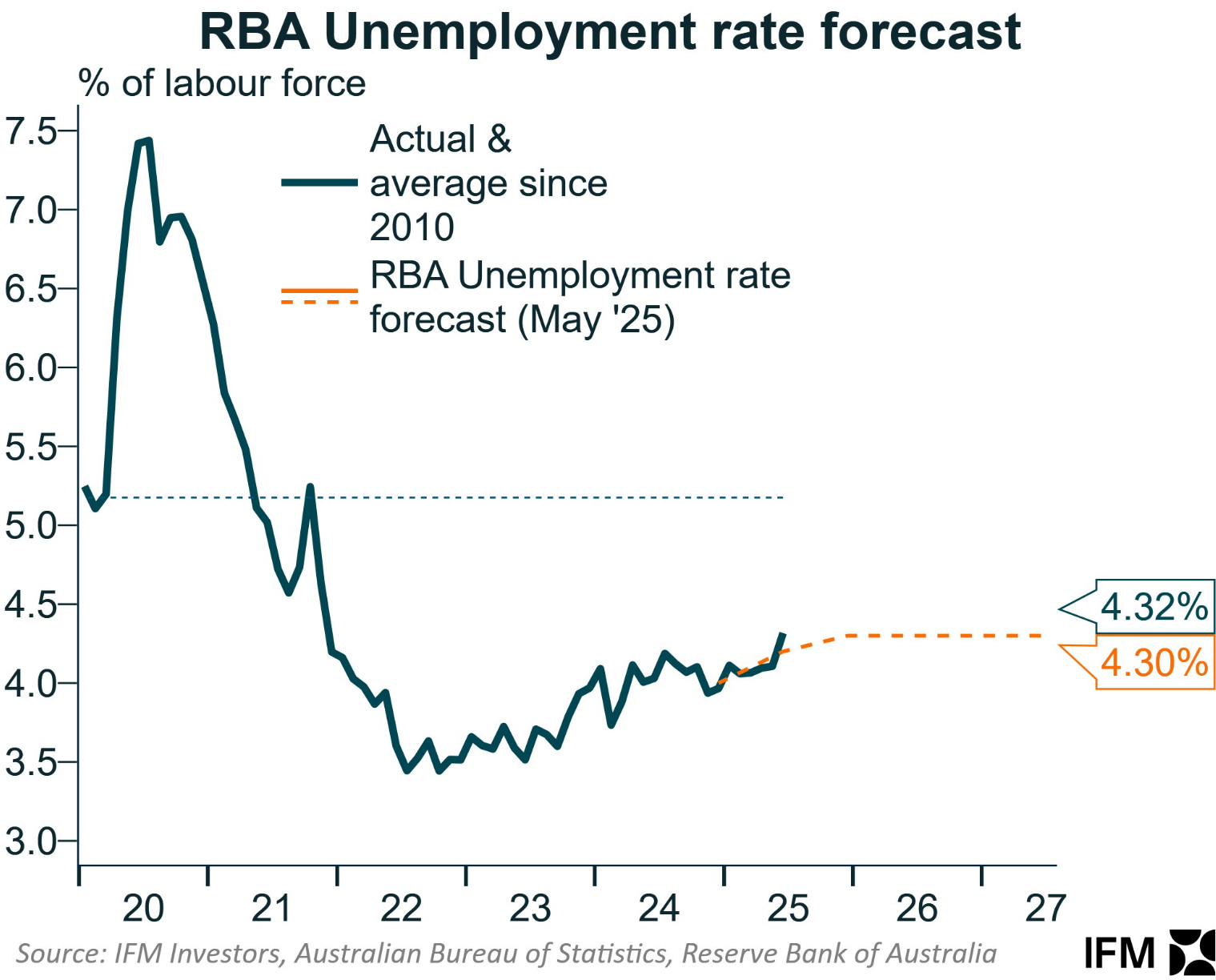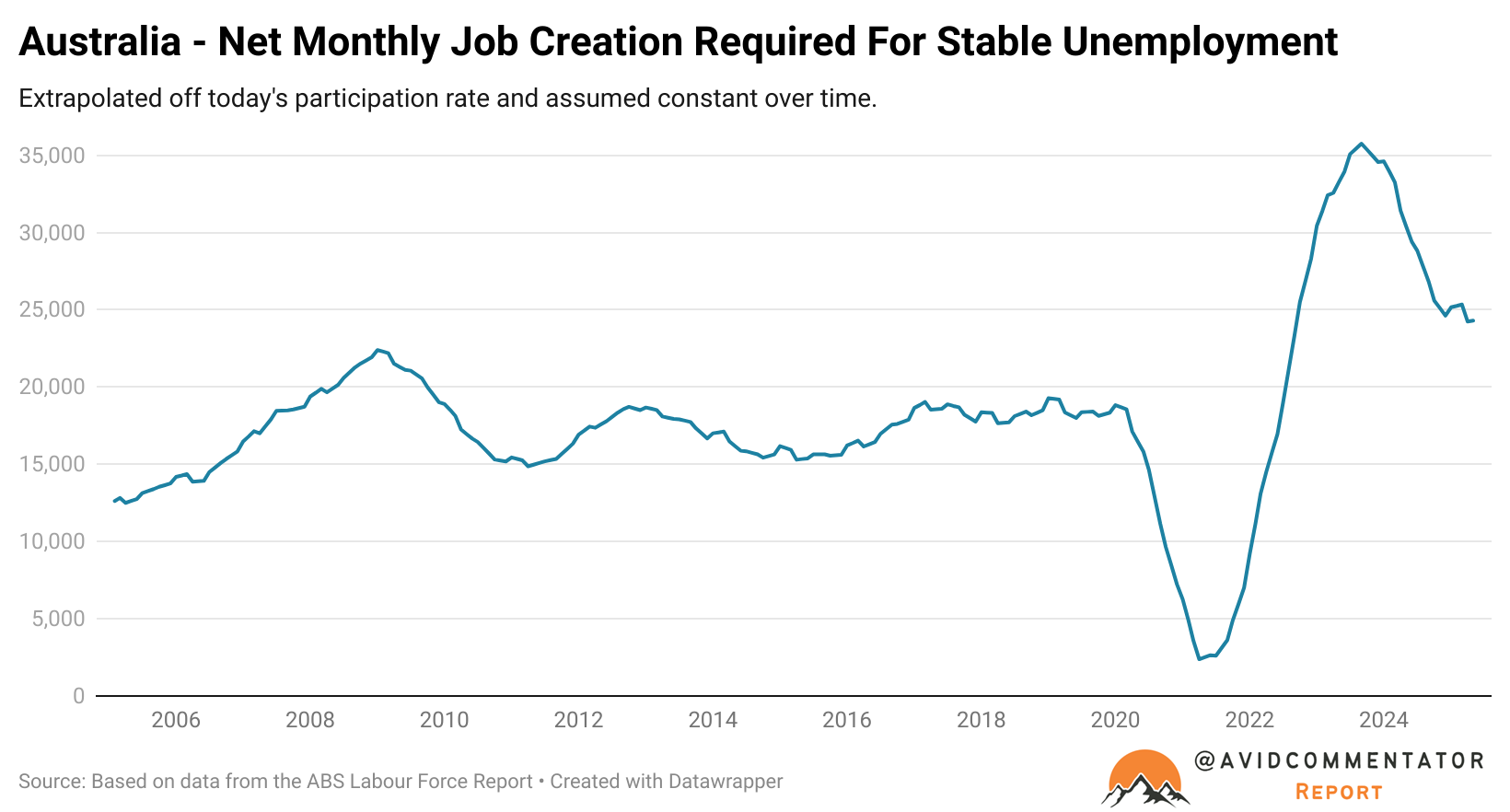In the years since the Albanese government came to power and the sugar hit of pandemic driven stimulus and so called ‘Revenge Spending’ drew to a close in the middle of 2022, the Australian economy has become more and more reliant on employment growth in non-market sectors of the economy.
The ABS defines non-market sectors as: Public Administration, Education and Healthcare, and Social Assistance.
Market sectors of the economy are all industries outside of those three.
Despite the non-market sector of the economy encompassing fewer than 27.3% of overall employment when the Albanese government came to power, since Q2 2022, it has represented 68% of overall jobs growth.

As the chart above shows, the divergence between the market and non-market sectors of the economy has been particularly pronounced since Q3 2023, with only 39,700 jobs being created in the market sector since then.
But there are signs that the taxpayer-funded jobs printer, which has supported the overwhelming majority of employment, is beginning to falter.
In the first quarter of 2025, the total level of non-market employment contracted for the first time since the lockdown in 2021.

This is arguably a result of state governments beginning to pull back on their role as a driver of employment growth, as they increasingly confront significantly more challenging environments for their respective budgets.
Meanwhile, in the background, federal programs such as the National Disability Insurance Scheme (NDIS) have continued to see the ranks of individuals employed by the program grow.
Shortly prior to his exit from federal parliament, former Opposition Leader Bill Shorten credited the NDIS with driving jobs growth and helping to keep the economy afloat, sharing an estimate that over half a million workers now earn a living through the scheme.
Amidst the ongoing pullbackin government-driven employment growth in aggregate at a state level, reports have emerged from the AFR that the federal government faces:
“billions of dollars in public sector funding cliffs, which bureaucrats warn threaten service delivery, key government initiatives, and thousands of jobs.
The article went on to note that key government departments, such as Health and Social Services, amongst a number of others, had warned their respective ministers that budget cuts as large as 50% were on the cards in coming years and asked if they should plan to cut staffing levels.
This comes in the wake of reports in January that Labor had not budgeted for up to $7.4 billion in federal public servant wages, driven by an increased headcount and a pay rises for approximately 185,000 workers.
According to the AFR, it would seem attempts to “massage” the budget to produce better forward estimates are a significant factor:



